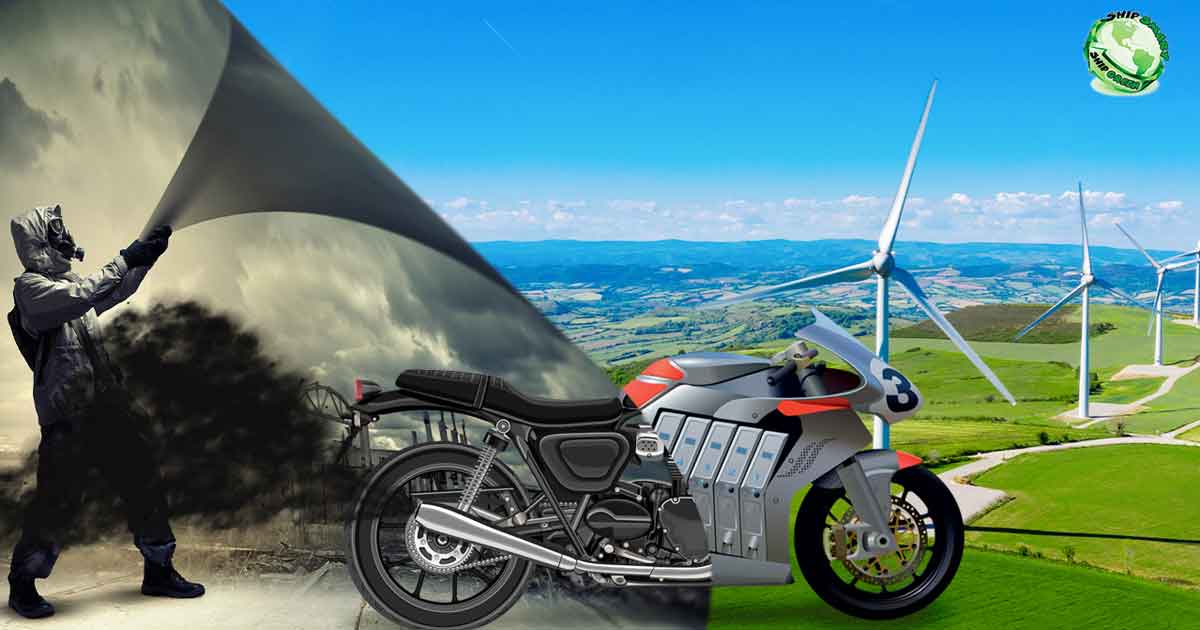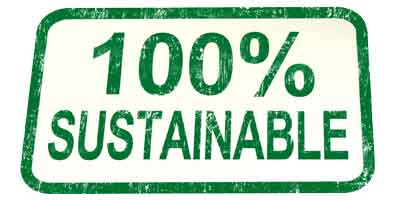Is Sustainability Defining the Future of Motorcycles?

Danny Reyes, Shipping Specialist, rider advocate, Angels fan and tailgate warrior. [email protected]
From Vegan Leather Seats to Bold Emissions Goals, Motorcycle Brands are Embracing Sustainability

When you hear the word “sustainability,” the rumble of a hog probably isn’t the first thing that comes to mind. But as rider preferences shift, motorcycles across our red, white and blue country are increasingly becoming a lot more green. A quick Google search will pull up sustainability reports from all your favorite motorcycle manufacturers. Academic researchers are also weighing in, publishing peer-reviewed journal articles about how to make motorcycles more friendly to the planet. Meanwhile, the e-motorcycle market is expected to hit $40 billion by 2026.
What does all this mean for riders like us? If we want to ride sustainably, we’ve never had more options. Here’s a quick rundown of what the industry is doing to reduce the carbon footprint of our motorcycles, from manufacturing materials to electric models and low-impact shipping methods.
Serious Sustainability Goals
In theory, motorcycles should be more sustainable than cars; they consume fewer resources and take up less space. However, it takes a commitment from manufacturers to turn that “should be” into reality. Brands from Harley-Davidson to Zero are stepping up their sustainability with bold goals for the carbon footprint of their rides. Here are a few manufacturers leading the way.

Harley-Davidson has launched a very public sustainability mission spanning business practices, social responsibility and manufacturing. Within the environmental arm of the policy, Harley pledges to accomplish a few key missions: lead the charge toward the electrification of motorcycles, improve fuel economy across its entire line, move toward zero waste and reduce greenhouse gas emissions in its operations. With the all-electric LiveWire and its Milwaukee Eight engine, the iconic brand has already made concrete progress. Its pledge to achieve a fleet average fuel economy of more than 50 mpg by 2027 would represent a 15% improvement from 2017—a lofty goal, but possible if it taps Milwaukee Eight-style innovation beyond the Touring and Softail models.
(Want an in-depth rundown of Harley’s progress on sustainability? Read its 2019 Sustainability Report.)
But despite the ongoing buzz about the LiveWire, Harley is far from the only motorcycle brand embracing eco-friendly practices. Yamaha and Honda share a bold goal for sustainability: reducing C02 emissions by 50% over the next three decades. Along with its lean manufacturing processes, BMW highlights the ability to recycle 95% of its motorcycles—that, and the fact that many of its bikes are still on the road decades after leaving the factory. Why does that matter? Because there are significant environmental costs to manufacturing a new motorcycle. Longevity is critical to the overall sustainability equation.
Electric Motorcycles on the Rise
In the 2018 Motorcycle Industry Council ownership survey, roughly 7 in 10 Millennial riders were interested in electric motorcycles. All signs say that number has only increased over the last few years. We recently published a blog on the rise of electric motorcycles, so we’ll direct you there for all the statistics here. But what it all boils down to is this: As battery prices decline, ranges increase and more consumers make sustainability a key purchasing factor, electric motorcycles will continue to gain market share.
Based on the success of the LiveWire, the country’s best-selling electric motorcycle, Harley is going “all in” on EVs. Its Silicon Valley R&D facility is devoted exclusively to electric two-wheel vehicles. But as the electric motorcycle market continues to develop, other brands are getting in on the action. Honda, Yamaha and Hero Motors are all developing electric motorcycles, while Zero and Energetica are building upon the success of their early models. Any way you slice it, riders have more electric motorcycle options than ever—a trend that won’t be slowing down any time soon.
(And in case you’re wondering whether EVs really are better for the environment, here’s a data-driven rundown from the non-partisan Union of Concerned Scientists.)
Biodegradable Materials that “Do No Harm”

Fuel economy is a key factor in a motorcycle’s overall sustainability score. But for a new generation of motorcycle startups, the materials are just as critical. Just ask Tarform, a Brooklyn-based company building motorcycles that are fully recyclable, from their components and leather down to every last part. The company’s soon-to-be-launched motorcycles feature seats made from vegan leather—a mix of pineapple, corn, mango and/or other natural fibers—and side panels crafted from flax seed. The frames are made from recyclable aluminum, and colorful bodywork comes from natural algae-based pigments.
Whether or not Tarform joins the growing list of failed motorcycle startups (think: Mission Motorcycles and Alta Motors) is yet to be seen. However, a sustainability-minded approach to materials is also working its way into the ethos of key players like BMW and Honda.
Is the Future Defined by Our Footprint?
Back to the question. Is the sustainability movement defining the future of motorcycles? It is clearly becoming a larger and larger part of the equation, that’s for sure. With an increasing contingent of customers demanding cleaner strategies, manufactures are scrambling to answer the call for a greener future. It might be hard to predict what will come next but we believe vegan leather seats and 100% recyclable motorcycles might just be the beginning of this movement, what do you think?
Sustainable Motorcycle Transport

To calculate the true carbon footprint of your motorcycle, you need to take into account every stage of its lifecycle, from manufacturing through disposal. Because the transportation sector is the largest contributor to U.S. greenhouse gas emissions, how you ship your motorcycle matters. But as our industry advances, transport companies are getting serious about sustainability—Motorcycle Shippers included. Whether you need to transport your motorcycle from the dealership to your home or ship it to a destination ride, we’re committed to safeguarding your bike and the planet.
With well over 1,000 trucks moving within our motorcycle transport network, we know that the actions of our company, and our shipping partners, matter. That’s why we’ve chosen a carrier that shares our commitment to sustainability and continued progress. As a member of the EPA’s SmartWay program, CRST measures, benchmarks and tracks its efforts to increase efficiency and fuel economy—and has the documentation to prove its progress. The carrier’s efforts to enhance energy efficiency and reduce greenhouse gas emissions has landed it on the SmartWay High Performer list of “clean fleets:” a recognition earned by just 2% of the carriers in the program. We’re proud to ship the vast majority of our customers’ motorcycles with CRST.
From our shipping partners to our operations, Motorcycle Shippers is taking concrete steps to lower our carbon footprint—because what’s good for the Earth is good for riders. Read our sustainability policy, and contact us to transport your motorcycle using our environmentally friendly approach. Then, grab your bike and explore a scenic route through the great outdoors.
